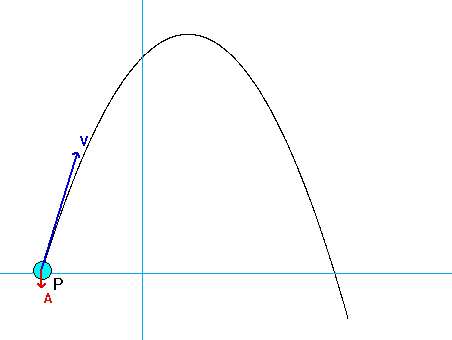Given: A particle P travels on a path described by the Cartesian coordinates of y = cx(b-x). The x-component of velocity for P is a constant.
Ask and answer questions through the "Leave a Comment" link above. You can learn as much by answering the questions of others as you do from asking questions.
From the animation below, you see that the velocity of P is always tangent to the path, and that the acceleration always points inward of the path. In the next class when we discuss the path description of kinematics, we will discover that this is true in general.
Note below that in this case the acceleration of P is always vertical. Do you know why?

HINTS:
The path of P is not given in terms of x- and y-coordinates that are known explicit functions of time (instead, the y-coordinate depends explicitly on the x-coordinate). For velocity and acceleration, we need the derivatives of x and y with respect to time. How do we do this? Recall the chain rule of differentiation:
dy/dt = (dy/dx)*(dx/dt)
Use this in setting up the components of velocity and acceleration.